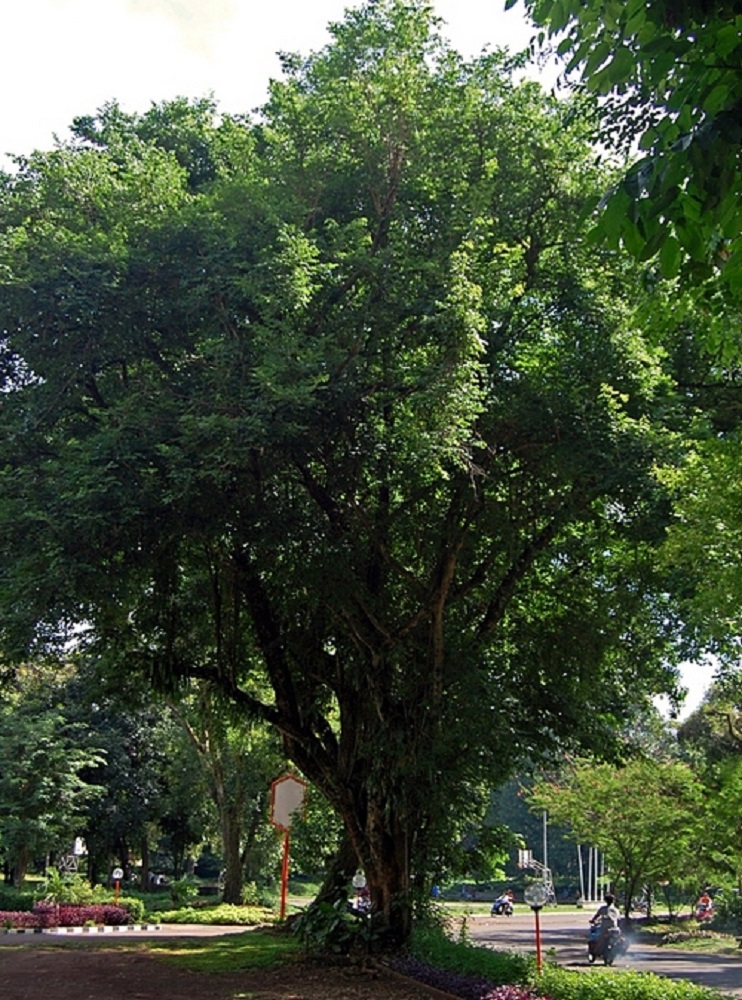Shisham - Black Rosewood Tree

Dalbergia latifolia
Summary
Scientific Classification
Kingdom: Plantae
Division: Magnoliophyta
Class: Magnoliopsida
Order: Fabales
Family: Fabaceae
Genus: Dalbergia
Species: C.latifolia
Scientific Name: Dalbergia latifolia Roxb.
Common Names:
English: Black Rosewood, Bombay Blackwood, East Indian rosewood, Indian palisandre, Malabar rosewood.
Hindi: kala-shisham, vilayati shisham.
Kannada: beete.
Marathi: kalaruk,sisau.
Description:
- Habit and Habitat: Black Rosewood is predominantly a single-stemmed deciduous tree with a dome shaped crown of lush green foliage. The tree can become 20-40 m tall, with a trunk diameter of 1.5-2 m. The bark is gray, thin with irregular short cracks, peeling in fibrous longitudinal flakes.
- Distribution: It is native to low-elevation tropical monsoon forests of south east India.
- Morphology:
Leaf: Alternately arranged leaves are odd-pinnate with 5-7 unequal sized leaflets originating from the same rachis. Leaflets are broadly blunt-tipped, dark green above and pale below.Alternate, compound dark green leaves measuring about 10 - 30 cm long, odd-pinnate with 5 - 7 unequal sized leaflets.The species name latifolia means broad-leaved.
Inflorescence: Inflorescence a terminal or axillary panicle 5–15 cm long, laxly branched, almost glabrous, many-flowered.
Flower: White flowers are borne in panicles, 0.5-1 cm long, in leaf axils.Flowers bisexual, papilionaceous, 6–8 mm long, distinctly pedicellate; calyx campanulate, c. 4 mm long, lobes shorter than tube, lower lobe longest, upper lobes fused.
Androecium: stamens 9, monadelphous; staminal tube 4 mm, split open one side.
Gynoecium: ovary stipitate, inferior, 5-7 mm, glabrous, 1-celled, ovules 1-few; style slender, incurved, glabrous; stigma capitate.
Fruit: Indehiscent brown pod measuring about 15 cm long and 1.5 - 2.5 cm wide, pointed at both ends.The thin pods are dispersed by wind.
Seeds: They contain 1-4 smooth brown seeds and do not open at maturity.Seeds kidney-shaped, 7–10 mm long.
Flowering and fruiting time: September–October and January–February respectively. - Propagation: For planting, seeds are sown in well-raised seedbeds of porous sandy loam or in polythene bags. Root and stem cuttings can also be used.
- Importance:
Its applications in high-class furniture, cabinet making and as a decorative wood, Its used as a shade tree in agroforestry in India and Indonesia, for afforestation of eroded soils, and as a soil improver fixing nitrogen and providing mulch. The bark is used in traditional medicine in India, to treat diarrhoea, indigestion and leprosy, and as a vermifuge. It is suitable for high-grade plywood and, owing to its beautiful colour and figure, for decorative veneer. Because of its strength and durability, it is suitable for all kinds of constructional work, doors, window frames and wagon building. It is one of the most popular woods for carving and engraving. It is suitable for turnery and is excellent for high-class bentwood furniture, walking sticks, umbrella handles and other bentwood articles It is also used for making musical instruments and sports equipment. - Location: throughout Campus.
 Trees of GSS Project supported by Makerspace Belgaum Website concept and designe by
Trees of GSS Project supported by Makerspace Belgaum Website concept and designe by